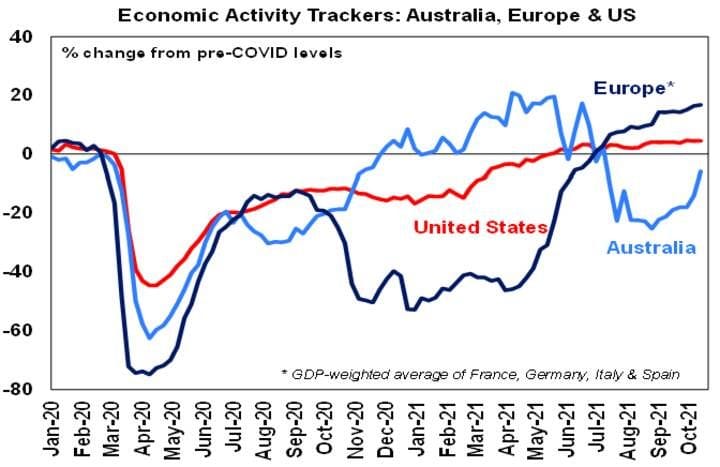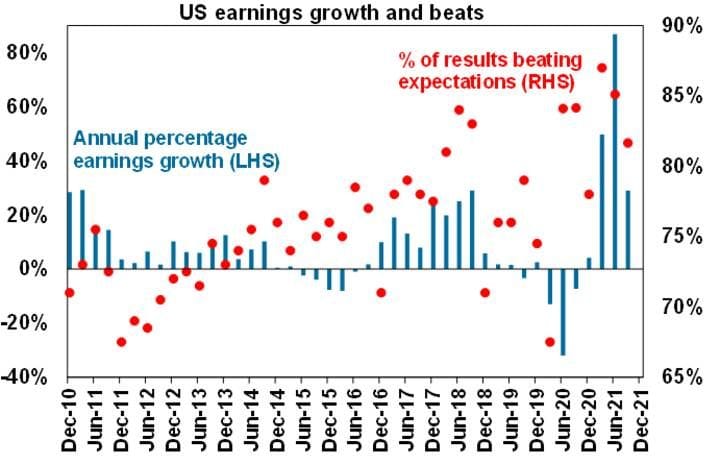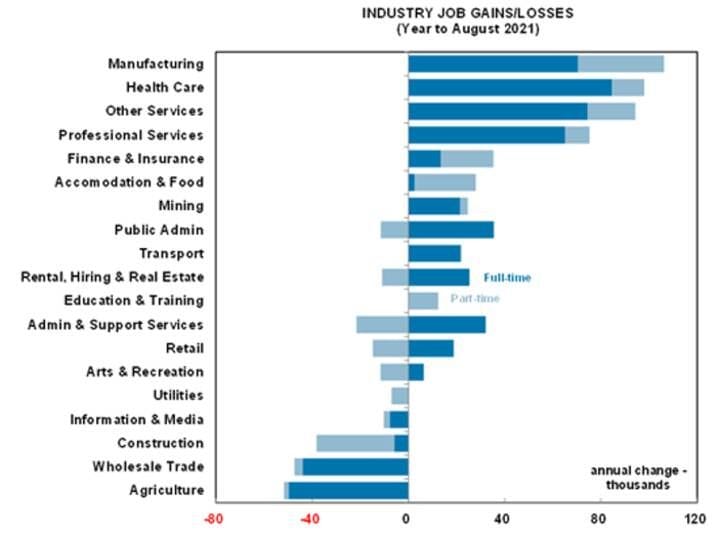- New global coronavirus cases are continuing to fall with most regions remaining in a downtrend, including the US although the UK and parts of Europe are trending up.

Source: ourworldindata.org, AMP Capital
- Key to watch in the UK and Europe will be hospitalisations and deaths. The UK (and maybe Europe) may be starting to see the feared rise in new cases following reopening, the start of cooler weather, a stalled vaccine program at 68% of the UK population, fading efficacy against new infection for those vaccinated earlier this year and a slow start to boosters. Key to watch will be whether vaccines remain successful in keeping hospitalisations manageable and deaths down as they have since mid-year. The US faces a similar risk. So far so good though. Deaths in the UK are continuing to run less than 20% below the level suggested by the December/January wave.
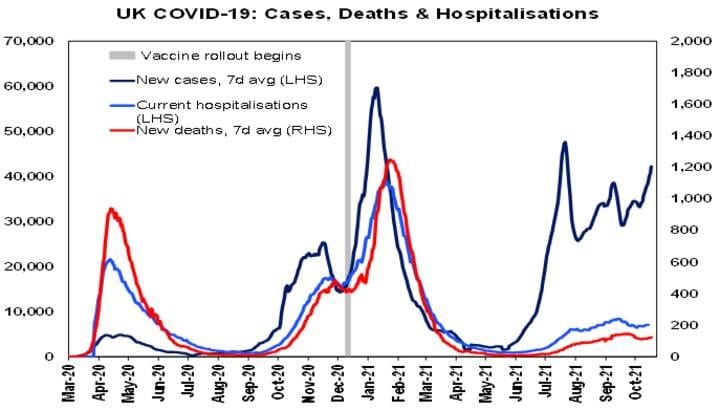
Source: ourworldindata.org, AMP Capital
- 52% of people globally have now had one dose of vaccine and 38% have had two doses.

Source: ourworldindata.org, AMP Capital
- A risk remains that poor countries are lowly vaccinated which increases the risk of mutations. Singapore is perhaps the gold standard with 83% fully vaccinated and is rapidly ramping up booster shots. Following reopening its still seeing around 3000 new cases a day – but it appears to have stabilised helped by the return to some restrictions and booster shots may be helping as is the case in Israel.
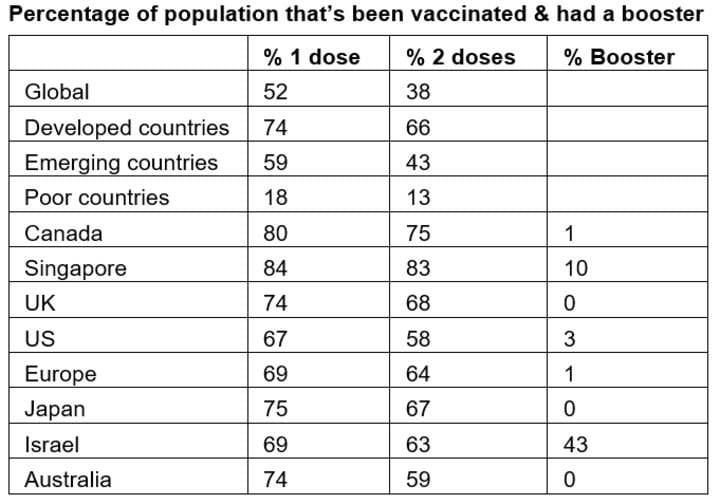
Source: ourworldindata.org, AMP Capital
- Australia is continuing to vaccinate around 1% of the population a day with 74% of Australia’s whole population now having had at least one dose, and 59% having had two doses, which is now above the US. The ACT, NSW and Victoria are continuing to lead the charge helped by making vaccination a condition of participating in the initial recovery (and maybe even indefinitely in Victoria). Allowing for current trends and the average gap between 1st and 2nd doses the following chart and table shows approximately when key vaccine targets will be met.

Source: covid19data.com.au, AMP Capital
- NSW and the ACT have surpassed the 80% of adults double vax target, and Victoria will do so in the next week. Tasmania has reached the 70% double vax target and other states should do so in mid-November. On current trends Australia will average 90% of the adult population fully vaccinated by the end of November. Booster shots are set to be available from mid-November in order to head off waning vaccine effectiveness, with Pfizer trials showing that their booster restores efficacy against infection to 95%.
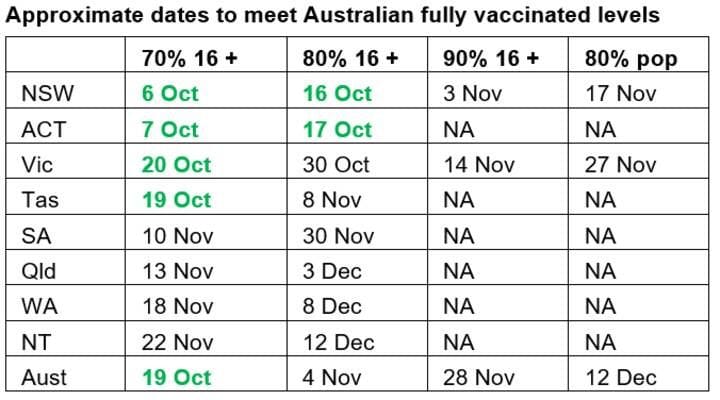
Source: covid19data.com.au, AMP Capital
- Reflecting the achievement of vaccine targets, reopening is continuing in NSW, the ACT and Victoria, and Queensland has issued a plan to reopen its domestic border with key steps contingent on the achievement of vaccination targets. If anything, the reopening is so far proceeding faster than expected reflecting changes under NSW’s new premier and the faster achievement of vaccine targets.
- Vaccination is helping keep serious illness down. Coronavirus case data for NSW shows the fully vaccinated make up a low proportion of cases (5%), hospitalisations and deaths in contrast to their majority share of the population and as in the UK the level of deaths is running 20% below the level predicted on the basis of the previous wave.
- The main risk in Australia remains a resurgence in new cases in NSW, the ACT and Victoria after reopening – like the UK, Israel and now Singapore have seen – which threatens to overwhelm the hospital system necessitating some reversal in reopening to slow new cases down as seen in Singapore. This could particularly be a risk in the months ahead if vaccine efficacy for those vaccinated earlier this year starts to wear off before booster shots are fully rolled out. The speed of the reopening and the sharp narrowing in the gap between doses (which can reduce vaccine effectiveness) has arguably added to this risk. Key to watch will be new cases but particularly hospitalisations and deaths – in terms of whether the hospital system is coping. So far so good – with hospitalisations and deaths remaining subdued relative to new cases compared to past waves – but its only early days in the reopening process. Domestic border reopening in the other Australian states that have not been locked down may also be bumpy as they have a lower level of natural immunity and high numbers of cases could impact confidence as they are less used to it.
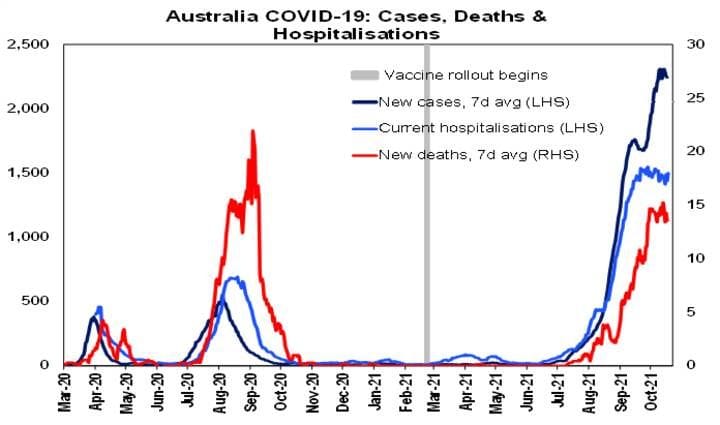
Source: ourworldindata.org, covid19data.com.au, AMP Capital
- New Zealand’s move to a traffic light system to guide the transition to living with covid once 90% of those over 12 are vaccinated makes sense – because it targets a higher level of vaccination which better helps reduce the risk of coronavirus spreading and provides guidance and greater certainty in terms of what level of restrictions will be imposed depending on pressure on the hospital system from new cases.
|









